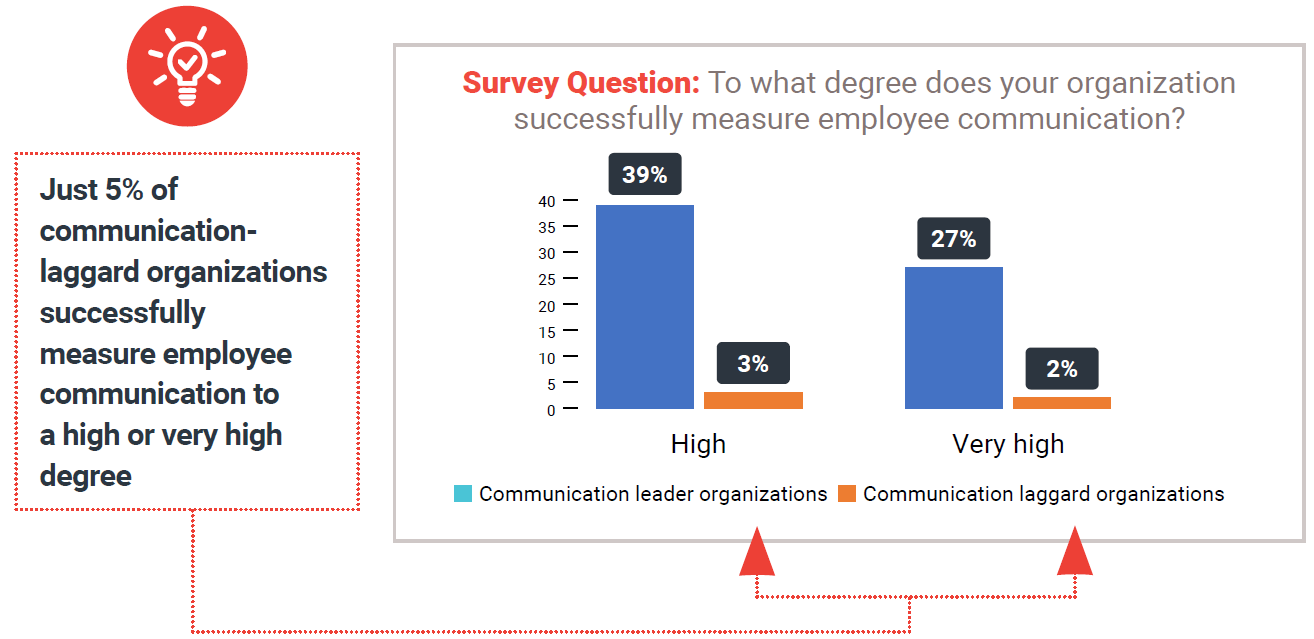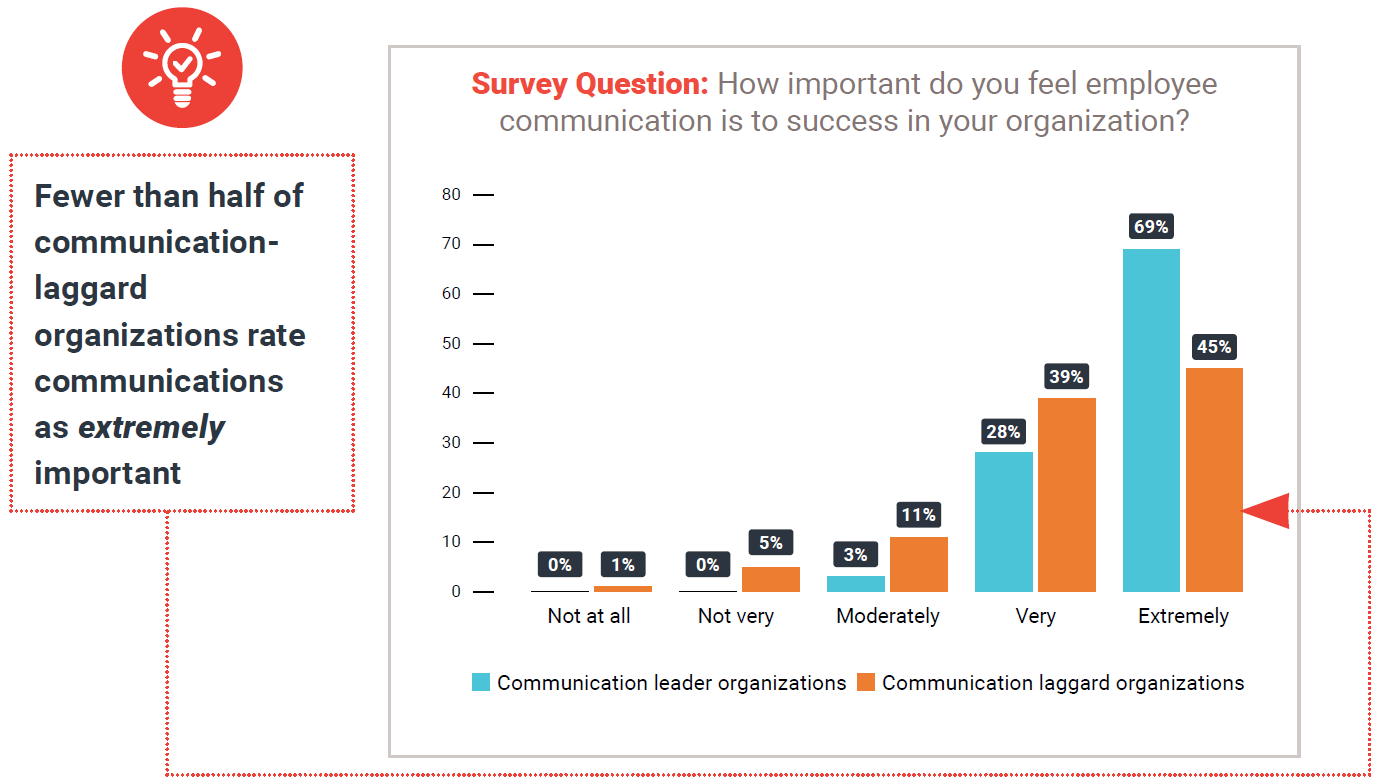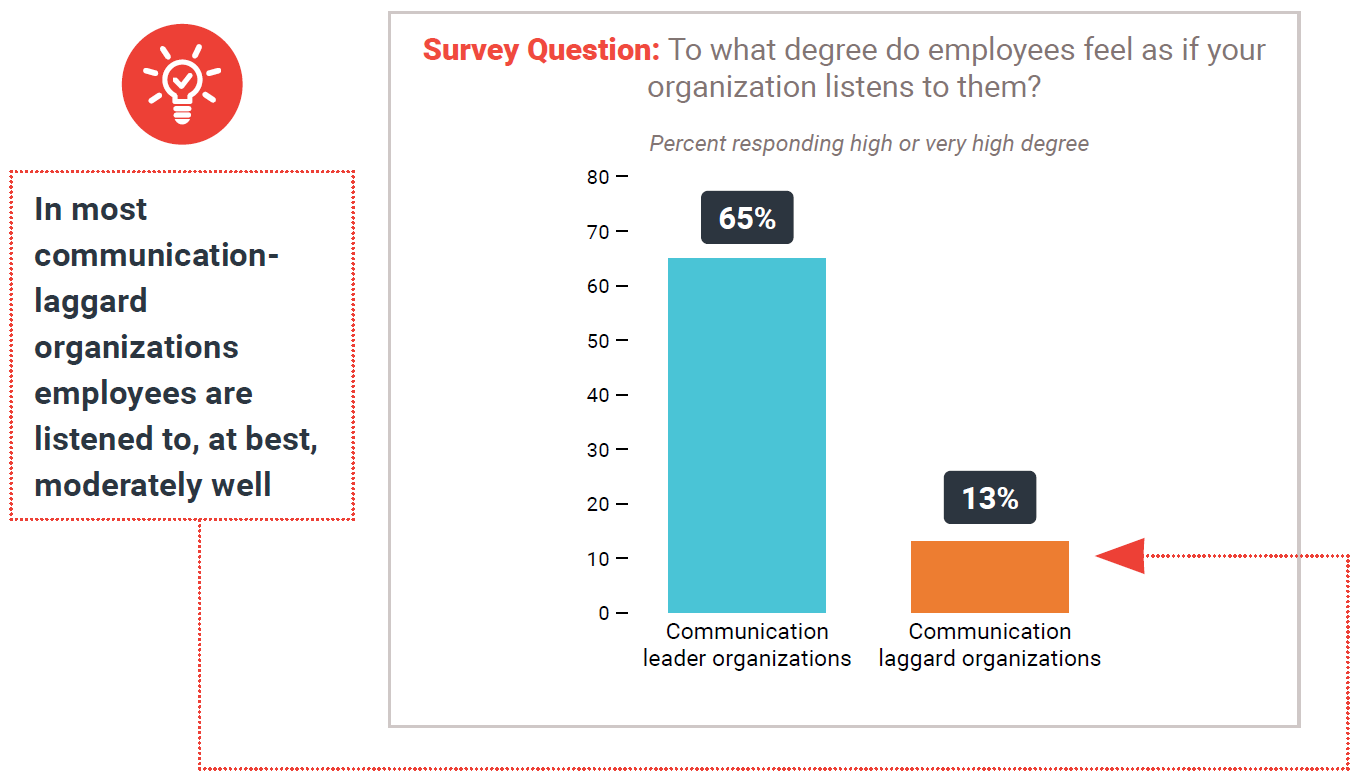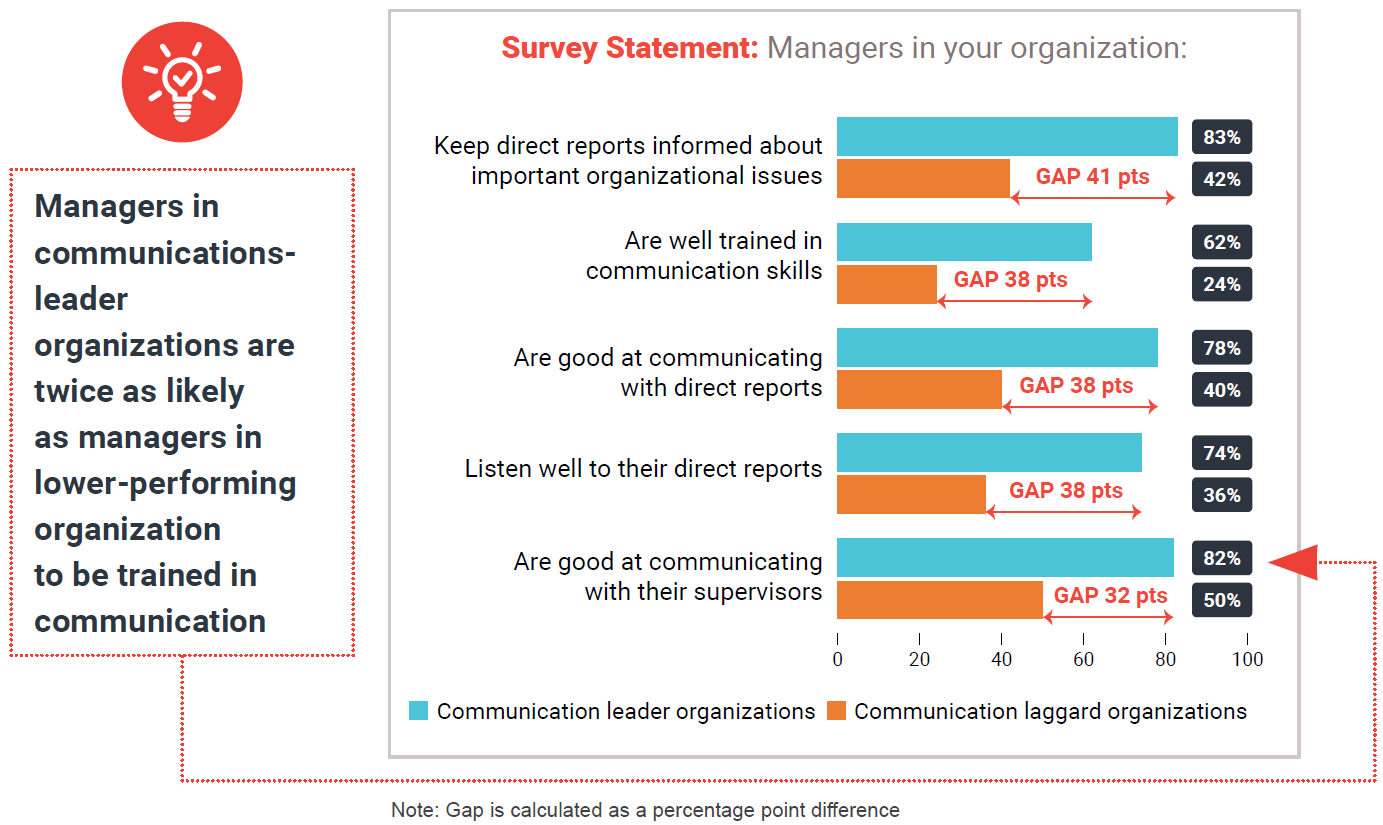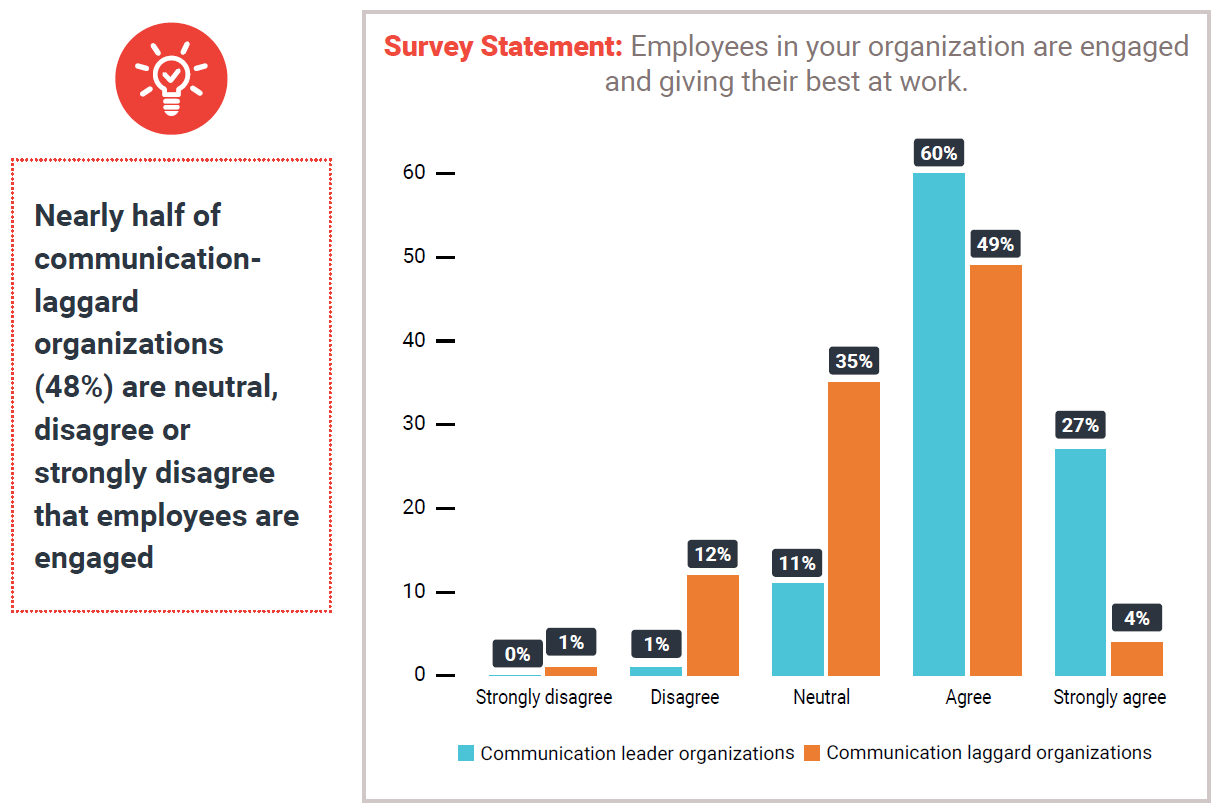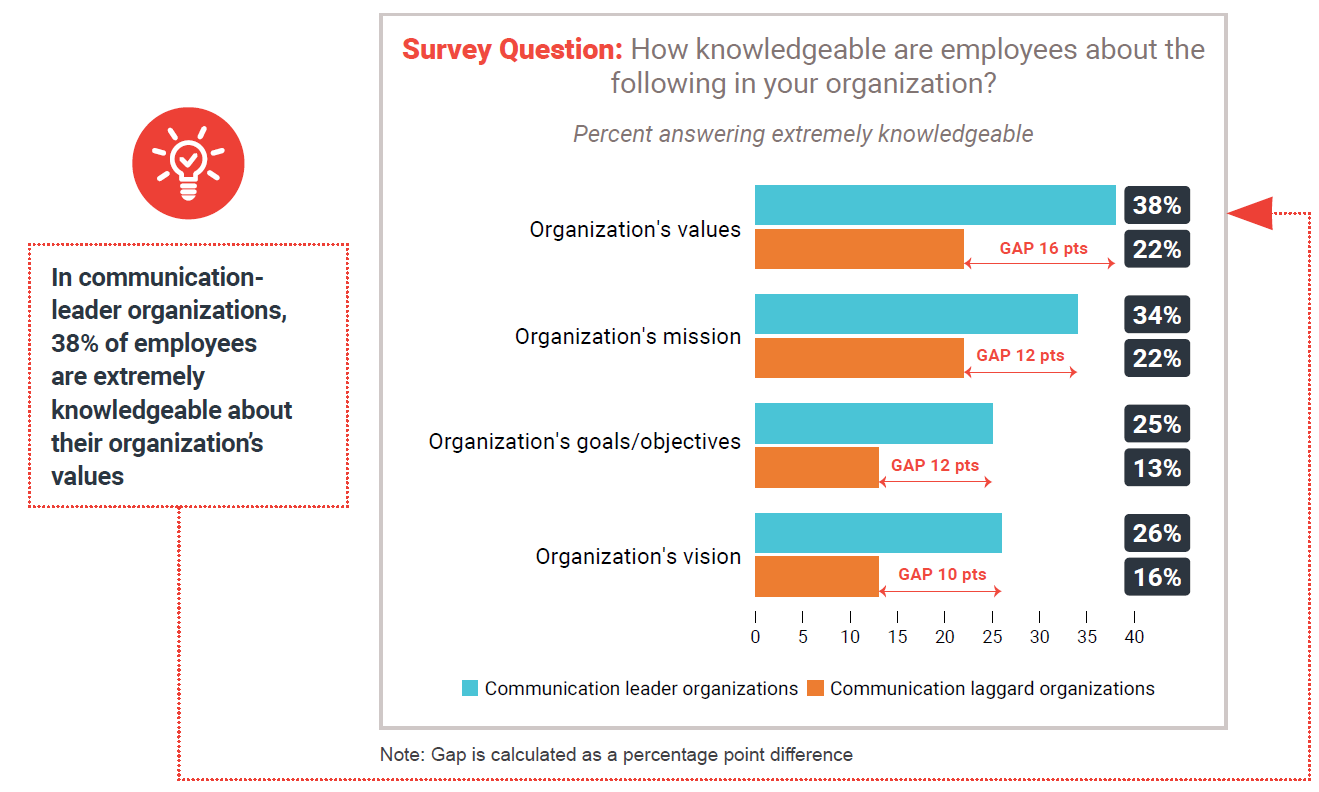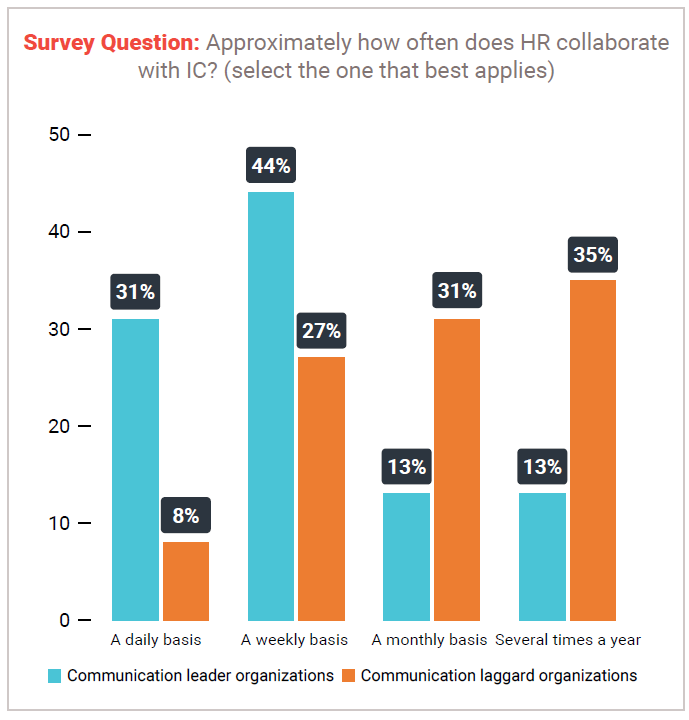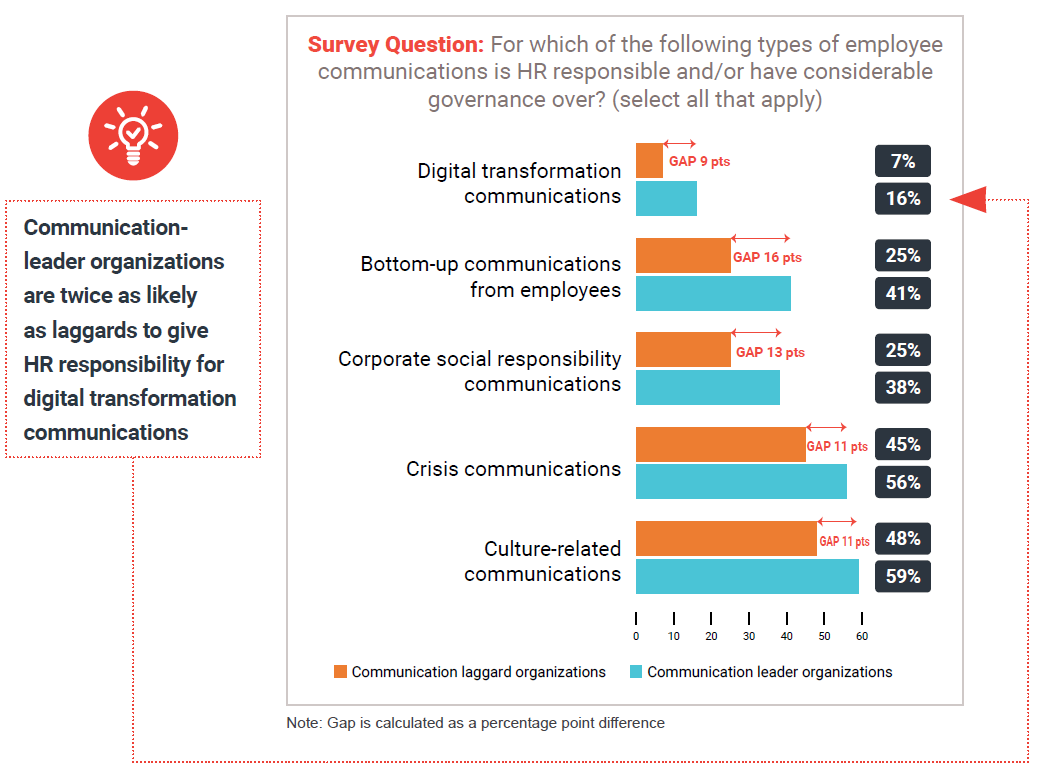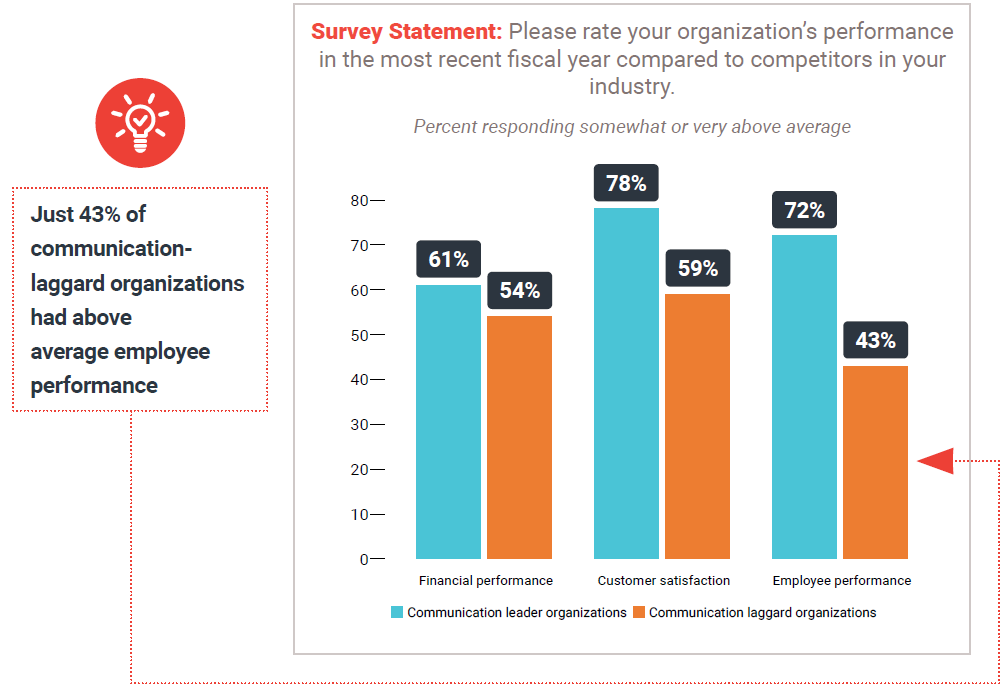To better understand what makes a difference in employee communication, we divided respondents into two cohorts:
- Communication-leader organizations: Those answering, “High” or “Very High” to the survey question “To what degree is overall employee communication effective in your organization?”
- Communication-laggard organizations in communication: Those answering, “Moderate,” “Low” or “Very Low” to that same question.

Communication-leader organizations are more likely than communication-laggard organizations to successfully measure communications
It’s striking to consider the difference between communication-leader organizations and communication-laggard organizations when you look at measurement. Among communications leader organizations 66% rate high or very high in successfully measuring communication; among communication-laggard organizations, it is a paltry 5%.
Organizations that wish to improve employee communication should start by getting some measures in place.
Communication-leader organizations are far more likely than communication-laggard organizations to rate employee communication as extremely important to the success of the organization
Most laggards rate employee communication as being at least “very important” to the success of the organization. However, when we look at leaders in communication, we see they are much more likely to rate it as extremely important.
Almost 70% of communication-leader organizations go so far as to say communication is extremely important compared with 45% of laggards.
Organizations wishing to improve employee communications might need to convince leadership that treating it as just moderately or very important is simply too low a bar.
Communication-leader organizations are five times as likely as communication-laggard organizations to have employees who feel the company listens to them to a high or very high extent (65% vs. 13%)
Perhaps one thing that will capture leaders’ attention is data on whether employees think the organization listens to them. Among communication-leader organizations the data usually conveys good news. Nearly two-thirds of this cohort say that employees feel the organization listens to them to a high or very high degree. Among low performers, however, the data is worrying. None listen to employees to a very high degree and only 13% listen to employees to a high degree, leaving 87% where employees are listened to moderately well at best.
Leaders don’t want employees to feel they are not listened to. Good twoway communication can change both the reality and the perception that the organization isn’t listening.
In communication-leader organizations, managers are almost twice as likely to keep direct reports informed about important organizational issues (83% vs. 42%)
Managers in communication-leader organizations are much more likely to be good at all aspects of communication than their brethren in lower-performing organizations. The biggest gap is in keeping direct reports informed about important organizational issues, where communication-leader organizations are almost twice as likely to do so than communication-laggard organizations.
How do you get managers to improve how they communicate with employees? The data suggest that one key thing you can do is training. Managers in communication-leader organizations are twice as likely as managers in communication-laggard organization to be trained in communication (62% vs. 24%).
Engagement is strongly associated with good communication
Communication-leader organizations report much higher employee engagement levels than communication-laggard organizations. Only 4% of communication-laggard organizations strongly agree employees are engaged, compared to 27% of communication-leader organizations. On the other end of the scale, almost half of communication-laggard organizations (48%) are neutral, disagree or strongly disagree that employees are engaged; only 12% of communication-leader organizations score this poorly on engagement.
Since leaders generally care about engagement, the link between communication and engagement creates a strong case for improving communication.
Employees in communicationlaggard organizations are less likely to know the organization’s values, mission, objectives, and vision
Employees in communication-laggard organizations are unlikely to be extremely knowledgeable about the organization’s values, mission, objectives, and vision. Only 22% of communication-laggards say employees are extremely knowledgeable about the company’s values. Communication-leader organizations do much better on all of these dimensions, although, even among this group only 38% are extremely knowledgeable about the organization’s mission.
Typically, CEOs care deeply about the values and want their employees to as well. It will concern them if most of their employees don’t even have a clear idea of what the values are. It could be useful for HR departments to gather data on their employees’ understanding of values, missions, objectives, and vision, and then share that data with the CEO.
HR departments in communicationleader organizations are far more likely than communication-laggard organizations to collaborate with IC on a daily basis (31% vs. 8%)
One notable practice of communication-leader organizations is that HR collaborates much more frequently with IC. Three-quarters of communication-leader organizations collaborate with IC at least weekly compared to only 35% of communication-laggard organizations. The difference is also stark if we focus on those who collaborate daily, just 8% of communication-laggard organizations do so compared with 31% of communication-leader organizations.
This data provides a good benchmark for organizations wondering how well HR and internal communications are collaborating.
Communication-leader organizations are more likely to give HR responsibility for various types of employee communication
Does it make sense to give HR responsibility for employee communications that are outside of the core HR areas? In some cases, perhaps it does. The data indicates that communication-leader organizations are more likely to make HR responsible for or have considerable governance over several types of communication that are not conventionally part of the HR mandate.
Communication-leader organizations outperform laggards on financial performance, customer satisfaction and employee performance
Slightly more communication-leader organizations than laggards report they have above average financial performance (61% vs. 54%). There is a more notable difference in customer satisfaction, where 78% of leaders are above average versus 59% of laggards.
The most dramatic difference between leaders and laggards, however, is in the area of employee performance. Almost three-quarters (72%) of communication-leader organizations report somewhat or very above average employee performance whereas fewer than half (43%) of laggards report above average employee performance.
